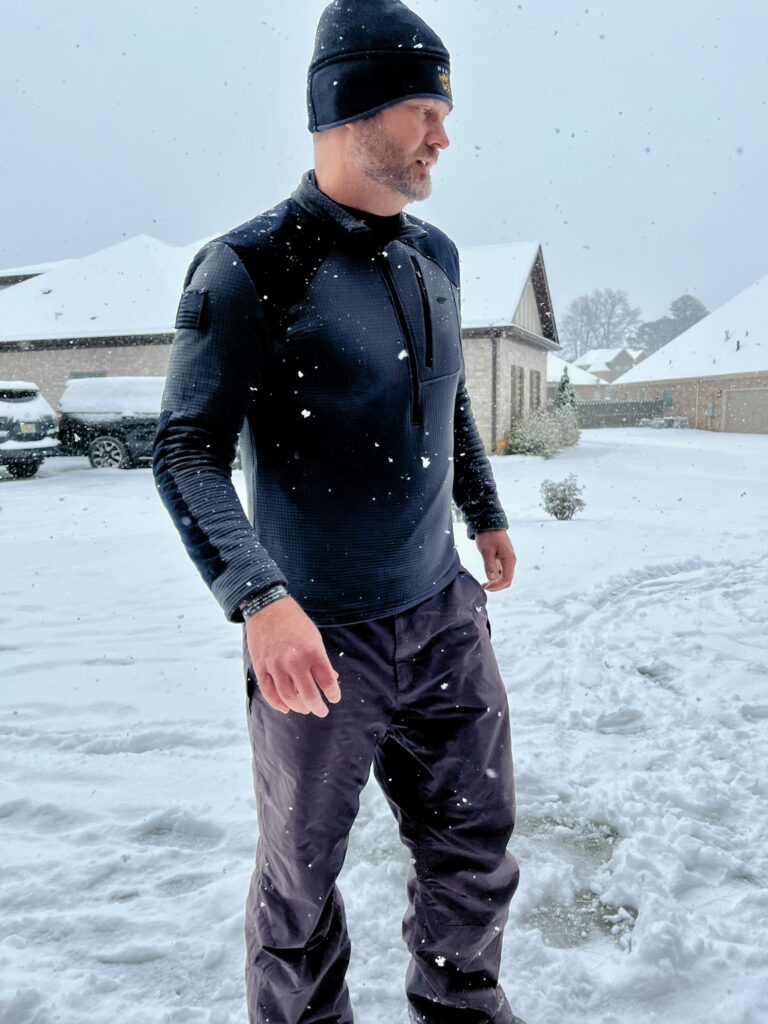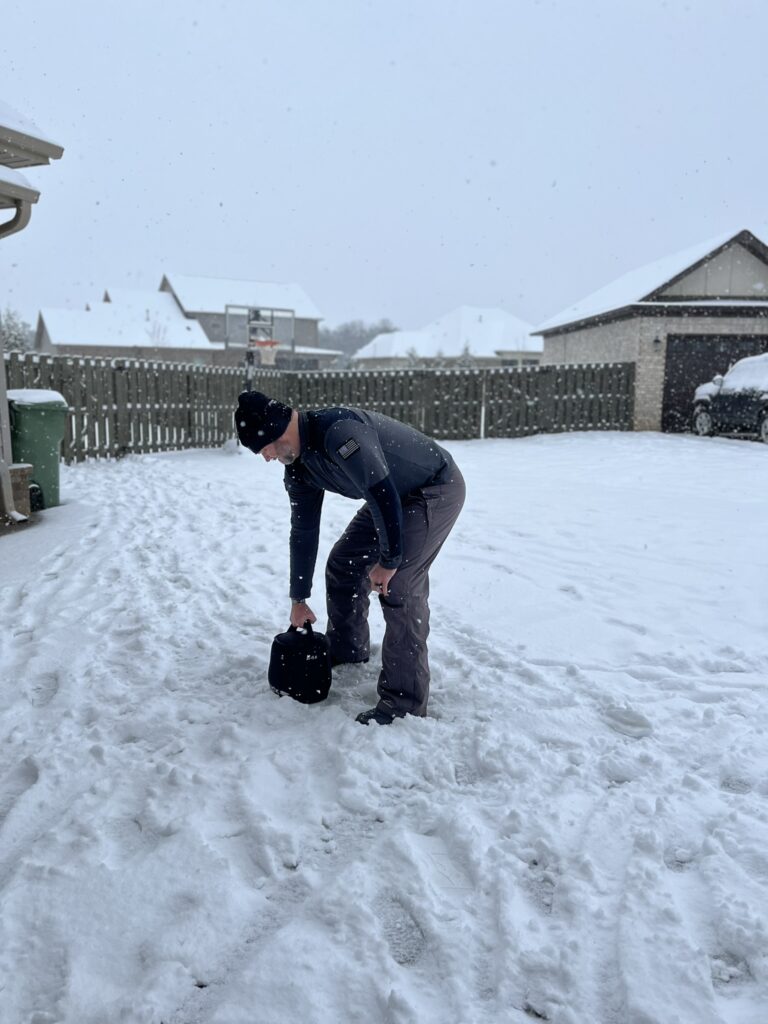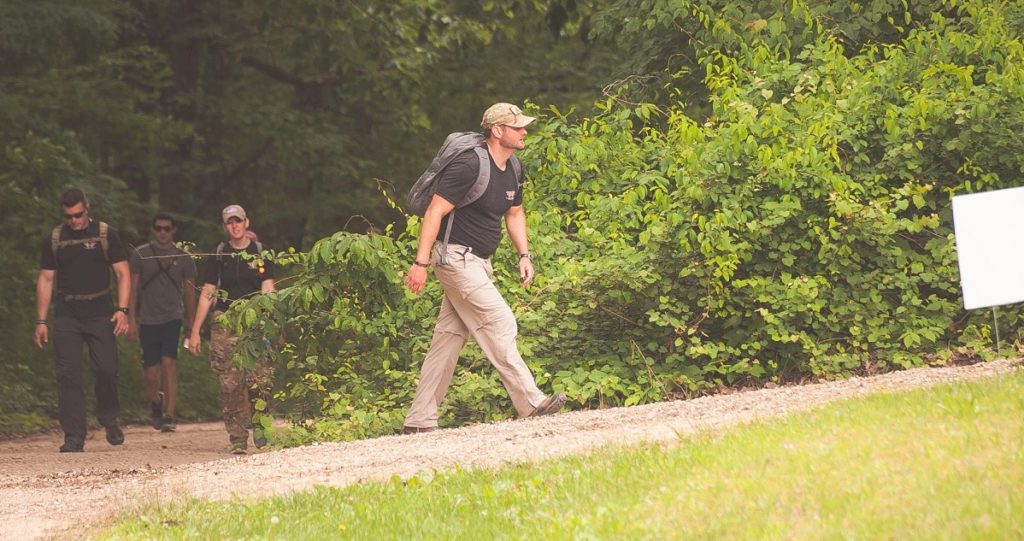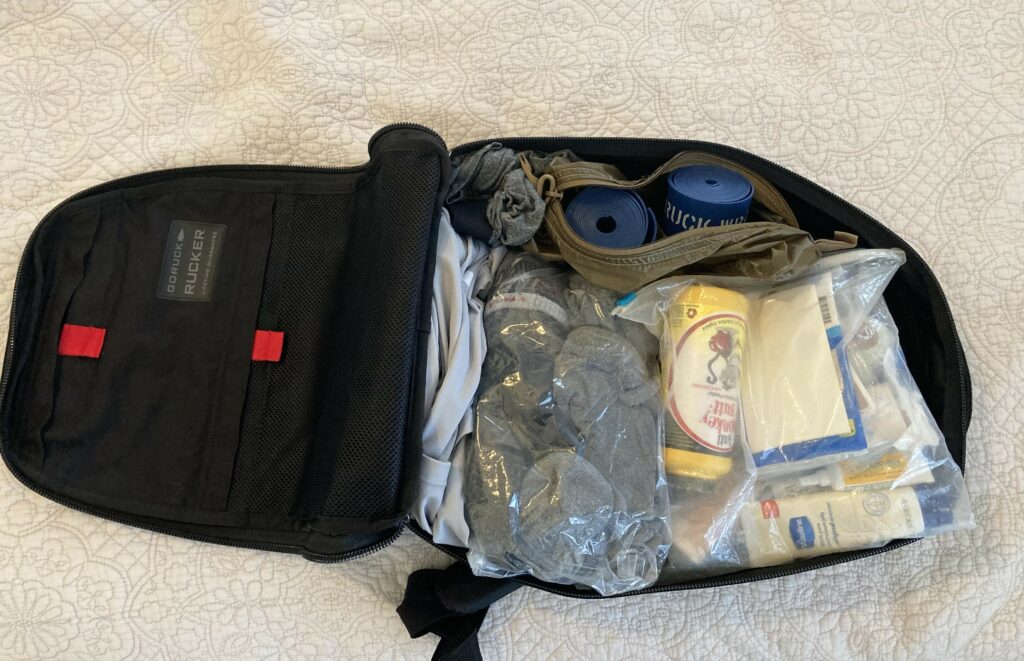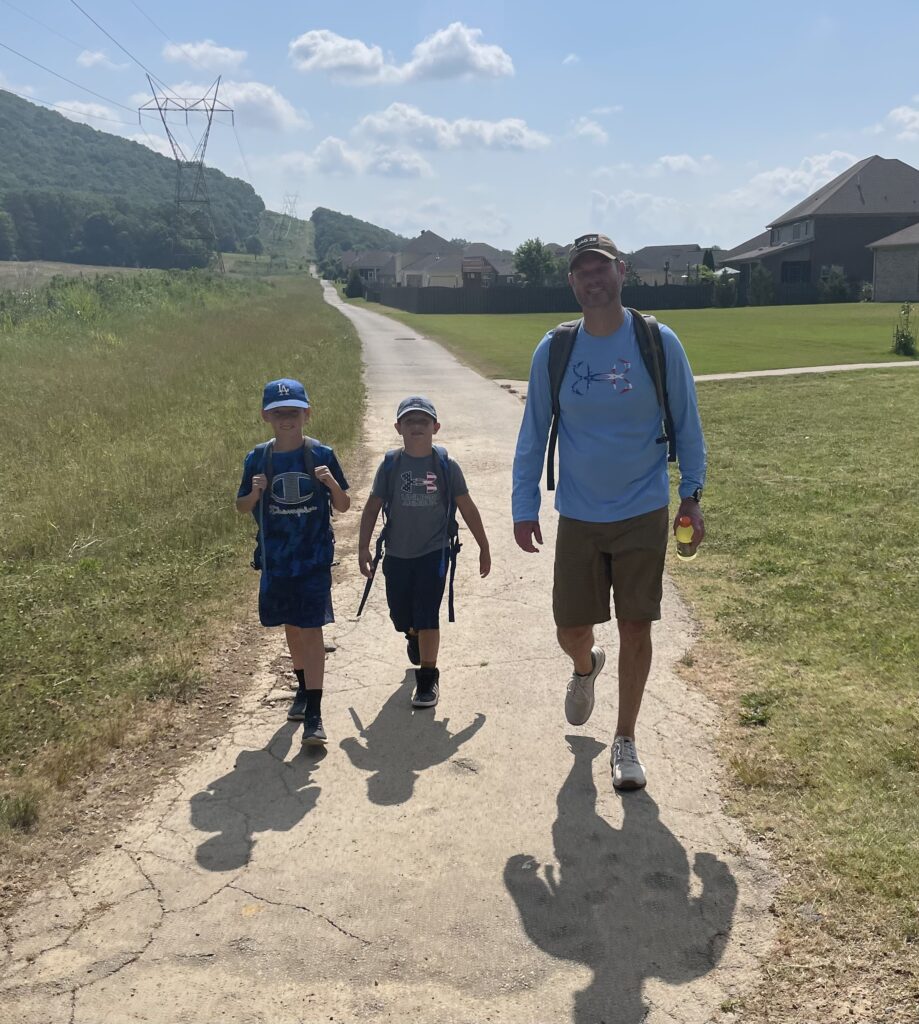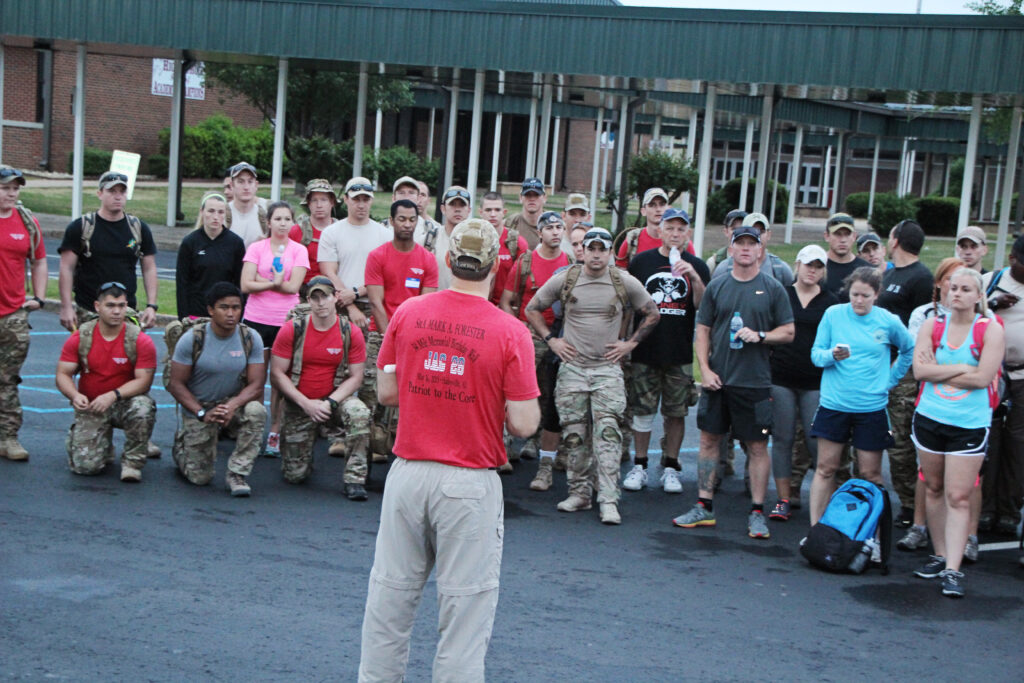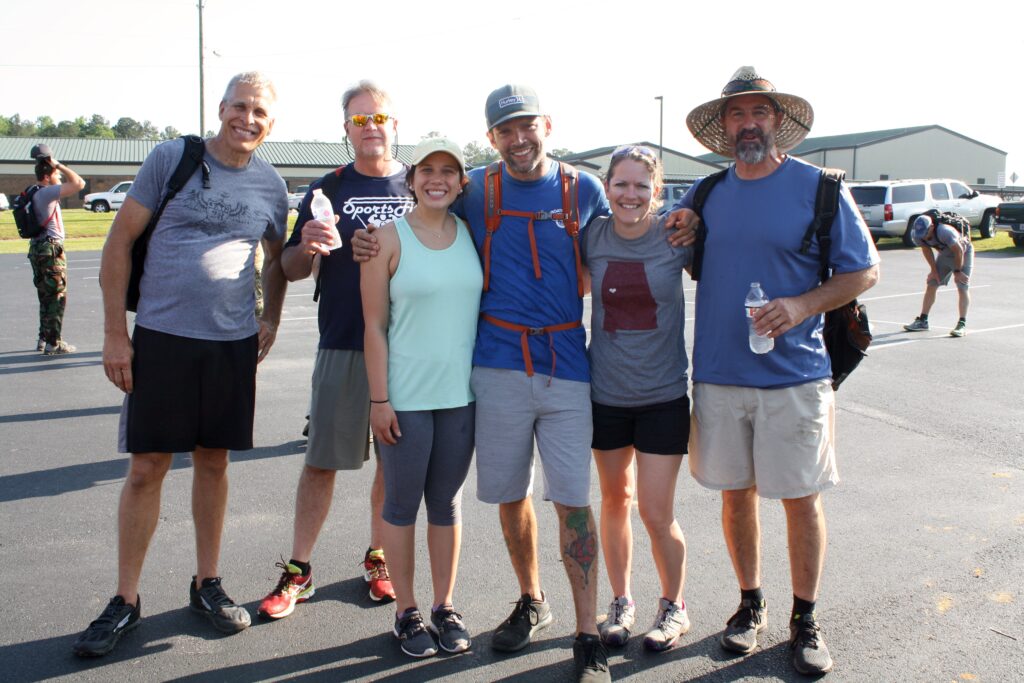In May 2023, I completed our annual Mark Forester JAG 28 Memorial Birthday Walk/Ruck. This was the first year I’ve used the GORUCK Bullet Rucker instead of the GR2 that I’ve used the past 12 years (along with using for many months of training each year).
This 15L Bullet Rucker had the capacity for everything I needed, although it was a little snug. I really like the size and simplicity.
So that you have all the details of this event, I’ll fill you in so you know why I carried what I did and didn’t carry other things, like water and food/snacks.
-it’s an organized event with police escorts and planned rest stops every 5-7 miles.
-each stop had drinks and snacks, along with a lunch stop
-we had a trailing car that provided drinks between stops when needed
-the weather was in the 50’s to upper 70’s, so it never got too hot
-we were on paved city and county roads the entire 28 miles, however 6 miles was on a dirt road
Here is a link that will take you to GORUCK’s site, so you see more info and purchase if you want: https://www.thadforester.com/gryt-rucker
I am an affiliate, so if you use my link, I’ll get a tiny commission and it will not cost you a thing. And here is my previous review comparing with the GR 2:
Here is what I carried in my Bullet Rucker (shown in the video and in pic below):
-5 pair Balega hidden comfort socks, 1 pair Darn Tough socks (in case my feet had serious issues. They didn’t!)
-1 extra pair SAXX underwear
-1 extra pair GORUCK Simple Shorts
-2 extra shirts
-blister kit
-Gold Bond powder
-Body Glide
-2 Bulletproof Bands (compression bands for achilles prehab at each rest stop)
-cell phone power charger
-1 Rx Bar
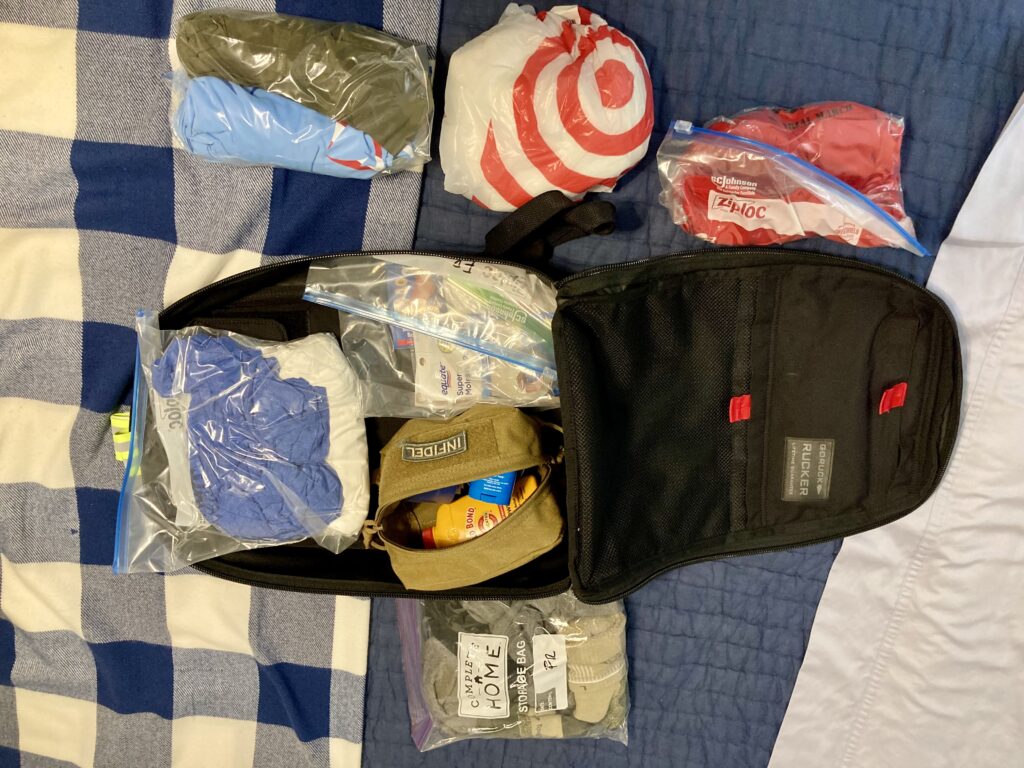
And if you want to learn more about the Mark Forester JAG 28 Birthday Walk/Ruck, click here: https://markaforester.com/jag28walk2023/ We have another coming up May 18, 2024. Join us!


